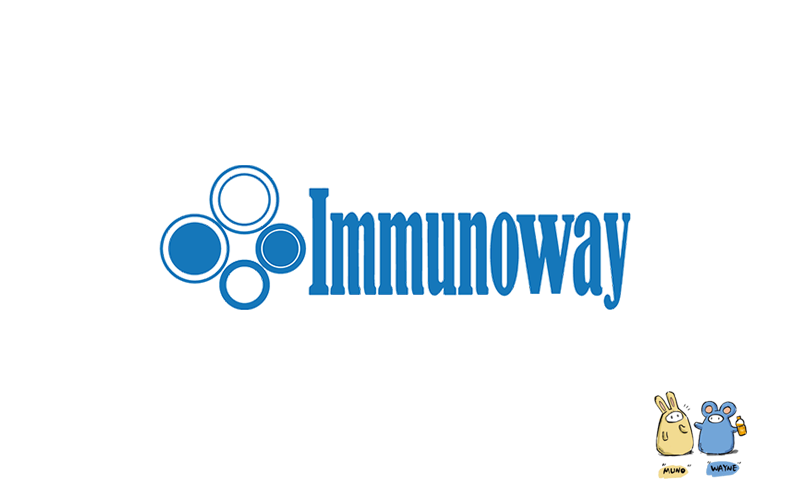
Catalog: YA0071
Size
Price
Status
Qty.
200μg
$600.00
3 weeks
0
100μg
$340.00
3 weeks
0
40μg
$190.00
3 weeks
0
Add to cart


Collected


Collect
Main Information
Target
CD73
Reactivity
Human
Applications
ELISA
Conjugate/Modification
Unmodified
Detailed Information
Recommended Dilution Ratio
ELISA 1:5000-100000; Flow Cyt 1-2μg/Test
Formulation
Phosphate-buffered solution
Source
Camel, chimeric fusion of Nanobody (VHH) and mouse IgG1 Fc domain , recombinantly produced from 293F cell
Specificity
This recombinant monoclonal antibody can detects endogenous levels of CD73 protein.
Purification
Recombinant Expression and Affinity purified
Storage
-15°C to -25°C/1 year(Avoid freeze / thaw cycles)
Concentration
Please check the information on the tube
Modification
Unmodified
Clone Number
PN0376
Related Products
Antigen&Target Information
Immunogen:
Purified recombinant Human CD73
show all
Specificity:
This recombinant monoclonal antibody can detects endogenous levels of CD73 protein.
show all
Gene Name:
NT5E NT5 NTE
show all
Protein Name:
5'-nucleotidase (5'-NT) (Ecto-5'-nucleotidase) (CD antigen CD73)
show all
Other Name:
NT5E ;
NT5 ;
NTE ;
5'-nucleotidase ;
5'-NT ;
Ecto-5'-nucleotidase ;
CD antigen CD73 ;
CD73 nanobody ;
NT5 ;
NTE ;
5'-nucleotidase ;
5'-NT ;
Ecto-5'-nucleotidase ;
CD antigen CD73 ;
CD73 nanobody ;
show all
Background:
The protein encoded byThis gene is a plasma membrane protein that catalyzes the conversion of extracellular nucleotides to membrane-permeable nucleosides. The encoded protein is used as a determinant of lymphocyte differentiation. Defects inThis gene can lead to the calcification of joints and arteries. Two transcript variants encoding different isoforms have been found forThis gene.[provided by RefSeq, Mar 2011]
show all
Function:
Catalytic activity:A 5'-ribonucleotide + H(2)O = a ribonucleoside + phosphate.,cofactor:Zinc.,Disease:There is a decrease in the activity of NT5 in B-cell chronic lymphocytic leukemia.,Hydrolyzes extracellular nucleotides into membrane permeable nucleosides.,similarity:Belongs to the 5'-nucleotidase family.,subunit:Homodimer; disulfide-linked.,
show all
Cellular Localization:
Cell membrane ; Lipid-anchor, GPI-anchor .
show all
Tissue Expression:
Isoform 1 is selectively expressed on CD34 hematopoietic stem and progenitor cells in adult and fetal bone marrow, fetal liver, cord blood and adult peripheral blood. Isoform 1 is not detected on other blood cells. Isoform 1 is also expressed in a number of non-lymphoid tissues including retina, pancreas, placenta, kidney, liver, lung, brain and heart. Found in saliva within small membrane particles. Isoform 2 is predominantly expressed in fetal liver, skeletal muscle, kidney, and heart as well as adult pancreas, kidney, liver, lung, and placenta. Isoform 2 is highly expressed in fetal liver, low in bone marrow, and barely detectable in peripheral blood. Isoform 3 is expressed on hematopoietic stem cells and in epidermal basal cells (at protein level). Expressed in adult retina by rod and cone photoreceptor cells (at protein level)
show all
Research Areas:
>>Transcriptional misregulation in cancer
show all
Reference Citation({{totalcount}})
Catalog: YA0071
Size
Price
Status
Qty.
200μg
$600.00
3 weeks
0
100μg
$340.00
3 weeks
0
40μg
$190.00
3 weeks
0
Add to cart


Collected


Collect
Recently Viewed Products
Clear allPRODUCTS
CUSTOMIZED
ABOUT US
Toggle night Mode
{{pinfoXq.title || ''}}
Catalog: {{pinfoXq.catalog || ''}}
Filter:
All
{{item.name}}
{{pinfo.title}}
-{{pinfo.catalog}}
Main Information
Target
{{pinfo.target}}
Reactivity
{{pinfo.react}}
Applications
{{pinfo.applicat}}
Conjugate/Modification
{{pinfo.coupling}}/{{pinfo.modific}}
MW (kDa)
{{pinfo.mwcalc}}
Host Species
{{pinfo.hostspec}}
Isotype
{{pinfo.isotype}}
Product {{index}}/{{pcount}}
Prev
Next
{{pvTitle}}
Scroll wheel zooms the picture
{{pvDescr}}

















